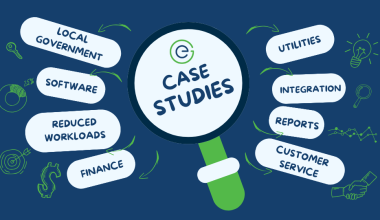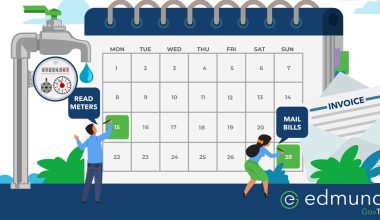If you are still entering mail payments into your billing system one by one, it may be time to take a look at some other options. Today, let’s look at what some of those other options are…
Bank lockbox service
Many banks offer a lockbox service where payments are mailed to a post office box at their processing facility, rather than to your office. The lockbox opens the mail, scans the payments, deposits the checks into your account and provides a file with the information for each payment. This file is then available for you to download and import into your billing system to create payment transactions.
A lockbox service reduces your office workload tremendously. You no longer have to open the mail, enter the payments, prepare the bank deposit or take the deposit to the bank.
However, there are drawbacks to a lockbox service. Many utilities find the cost associated with a bank lockbox service to be prohibitive. Because most bank lockbox services are fully automated and rely on scanning the bill stub to determine the account number, payments received without a bill stub pose a problem. This includes checks received from your customers who pay using their bank’s online bill pay software. Of course, if you are using the eLockbox Pro solution that we discussed in January in issue #2, this won’t be a problem. Many lockbox services send payments received without a bill stub to your office, either by mail or via courier to the local branch of their bank, delaying the posting of the payment.
If you’ve looked into a bank lockbox in the past and determined that it was too expensive, please don’t stop reading yet…
Remittance processing systems
In-house remittance processing systems have become increasingly popular in recent years, especially since the passage of the Check 21 Act. With a remittance processing system, you purchase a scanner that scans both the bill stub and the customer’s check. As the mail is opened, bill stubs and checks are matched and fed into the scanner. The scanner reads the customer’s account number from the bill stub and the check information from the MICR line as well as using optical character recognition (OCR) software to read the amount of the check and captures digital images of both sides of the bill stub and the check. The checks can then be deposited electronically with your bank using remote deposit and a file is exported to be imported into your billing system to create payment transactions.
This is a huge time savings to the utility in not having to enter payments individually, prepare a deposit or take the deposit to the bank.
Be wary of remote deposit only systems
Many banks sell, or in some cases provide at no cost, check scanners that only scan checks for remote deposit purposes. This is a huge time savings for the bank, but not so much for the utility. If you are considering implementing a check scanning solution wouldn’t you also want to also reap the benefit of not having to manually enter payments? If your bank approaches you about implementing a check scanning solution, be sure it can also scan bill stubs and produce a payment file so that you maximize the benefit of installing the system.


